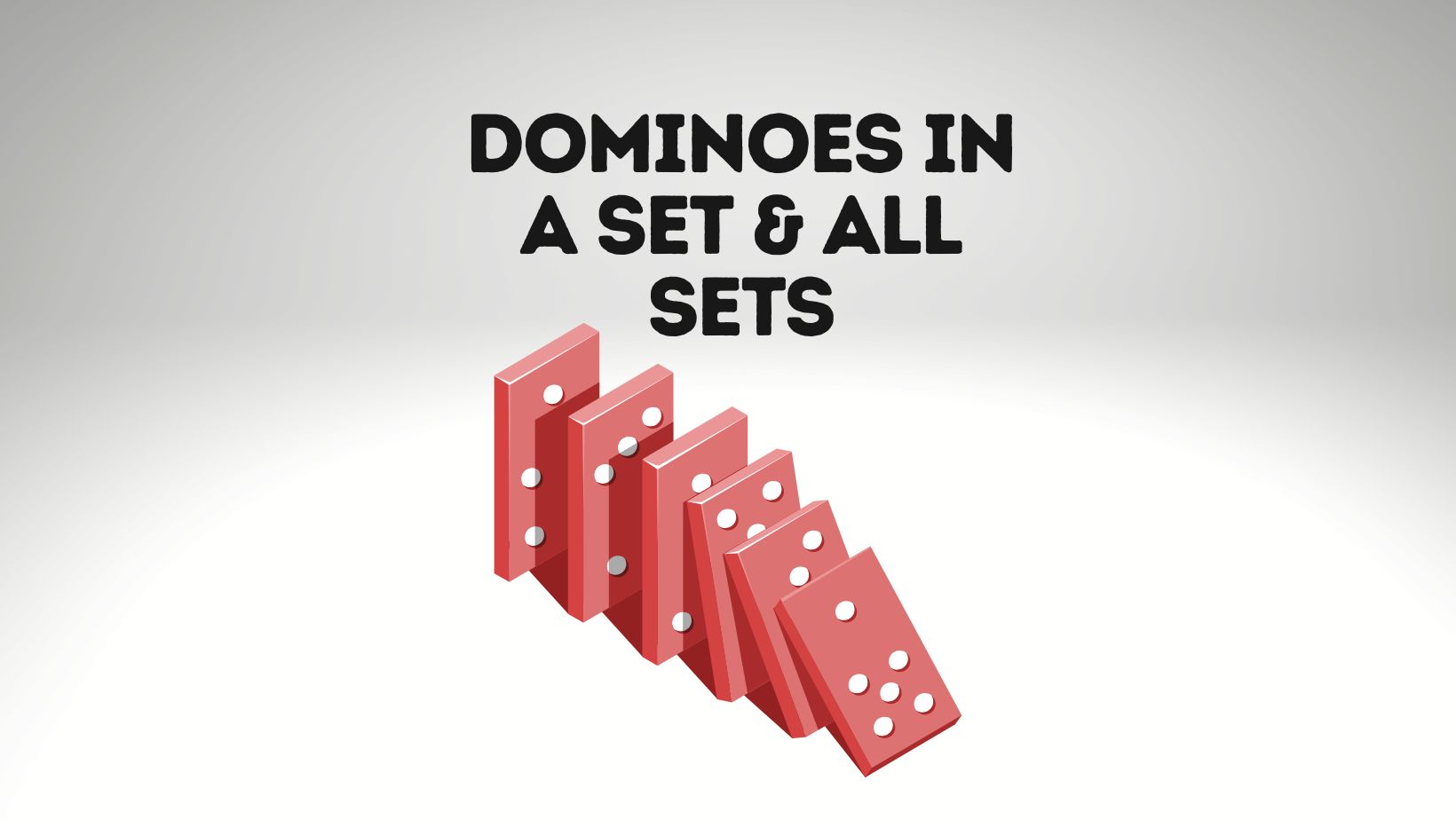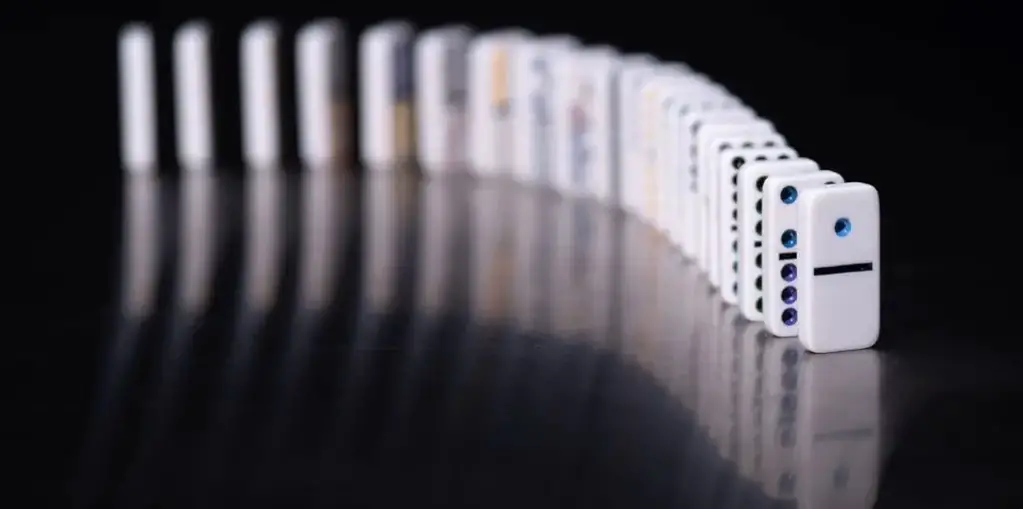
Are you curious to find out how many dominoes are in a set? Or what the different types of sets are? You’ve come to the right place! Dominoes are one of the oldest and most popular games around. From childhood memories to professional tournaments, the game has been enjoyed by people from all walks of life.
In this blog post, we’ll be looking at how many dominoes are in a set and all you need to know about sets. We’ll also explore some tips for choosing the perfect set for your next game night, plus some fun facts about dominoes that you may not have known before. So read on and get ready to take your dominoes knowledge up a notch!
How many dominoes are in a standard set?
In a standard set of dominoes, there are 28 tiles.
Each tile has two sides, each with a different number of dots (or pips).
The numbers on the tiles range from 0 to 6.
Therefore, there are 28 dominoes in a standard set.
How to calculate the number of dominoes in all sets
To calculate the number of dominoes in all sets, you need to first determine the total number of dominoes. There are 28 dominoes in a set. However, there are different types and sizes of sets. The most common type is the double-six set, which contains 28 unique Dominoes.
There are also other types of sets that have more or fewer dominoes. For example, a double-nine set has 55 dominoes, while a triple-six set only has 27 dominoes. So, when calculating the number of dominoes in all sets, you need to take into account the different sizes and types of sets.
How many dominoes are in a double-nine set?
A double-nine set contains 55 dominoes. There are 9 different values that can appear on the face of a domino, and each value appears twice (once as a dot and once as a line).
So, there are 9×2=18 different possible faces that can appear on a domino. A double-nine set has 18 different faces, each appearing three times (for a total of 54 dominoes), plus one blank-faced domino.
How many dominoes are in a double-twelve set?
A double-twelve set contains 91 dominoes. The full set of double-twelve dominoes contains all possible unique combinations of dots on the faces of the dominoes, from 0-0 to 6-6.
How many dominoes are in a set formula?
In a standard set of dominoes, there are 28 pieces. Each domino is a rectangle with two squares on each end. The number of squares on each end corresponds to the number of dots on that side of the domino. For example, a “6-4” domino has six dots on one end and four dots on the other.
What is a full domino set?
A full domino set is made up of 28 tiles, each with two numbers from 0-6 printed on them. The numbers on each half of the tile match, so there are pairs of numbers from 0-0 all the way to 6-6.
The usual Western set consists of 28 pieces, marked respectively 6-6 (“double six”), 6-5, 6-4, 6-3, 6-2, 6-1, 6-0, 5-5, 5-4, 5-3, 5-2, 5-1, 5-0, 4-4, 4-3, 4-2, 4-1, 4-0, 3-3, 3-2, 3-1, 3-0, 2-2, 2-1, 2-0, 1-1, 1-0, 0-0.
Larger sets running up to 9-9 (58 pieces) and even 12-12 (91 pieces) are sometimes used.
How to play dominoes?
There are a few different ways to play dominoes, but the basic rules are pretty similar no matter which variation you choose. In general, each player gets a certain number of dominoes (usually between 7 and 15) and takes turns placing them on the table.
The first player starts by matching one end of their domino with an end of an unplayed domino on the table. If they don’t have a domino that can be played, they must draw from the bone pile until they find one that can be played. Play then proceeds clockwise around the table.
When it’s your turn, you must place a domino if you can. If you can’t, you must draw tiles until you find one that can be played. When there is only one tile left in the boneyard, the player who draws it loses even if it can be played.
The game ends when one player has placed all of their dominos or when no moves are possible because all remaining dominos are blocked. The winner is the player with the fewest points (the sum of all pips on all unfilled ends of dominos).

Domino game variations
There are many domino game variations, some of which are played with a double-six set and some with a double-nine set. The most common variation is probably the block game, in which players take turns placing dominoes on the table until one player is unable to make a move. The first player to reach the agreed-upon score wins the game.
Another popular variant is draw game, in which players try to collect as many dominoes as possible before the endgame. The player with the highest total score at the end of the game wins.
There are also several partnership games played with two teams of two players each. In these variants, players work together to try to score points or achieve some other objective. One popular partnership game is Mexican Train, in which players take turns laying down dominoes that connect to a central train track. The first team to reach the agreed-upon score wins the game.
yet another popular domino game variation is All Fives, sometimes also called Five Up or Muggins. In this variant, points are scored not only for completing a row of dominoes, but also for having the endpoints of rows sum up to five (hence the name of the game).
For example, if a player lays down a row of 3-4-5-6, they would score 5 points (3+4=7; 5+6=11; 7+11=18; 18/5=5 points). The first player to reach the agreed-upon score wins the game.
Finally, there is a Domino Solitaire game in which players attempt to place all of the pieces on the board in such a way that they form a continuous line. If done successfully, the player wins the game.
Conclusion
With this article, we hope you now have a better understanding of how many dominoes are in a set. Although the exact number varies depending on the type of set you choose, most sets typically contain 28 pieces. No matter what size or shape your dominoes may be, they will always give you hours of fun and entertainment with family and friends! So take out your dominoes today and start playing – who knows? You might even learn something new about yourself along the way!
Inkcue brings to you the latest and best in tech industry with reviews, buyer’s guide, technical know-how and problem solving. Our aim is to provide a one-stop guide to all your technological needs and to simplify the process of purchasing them. Cheers Amigos!
